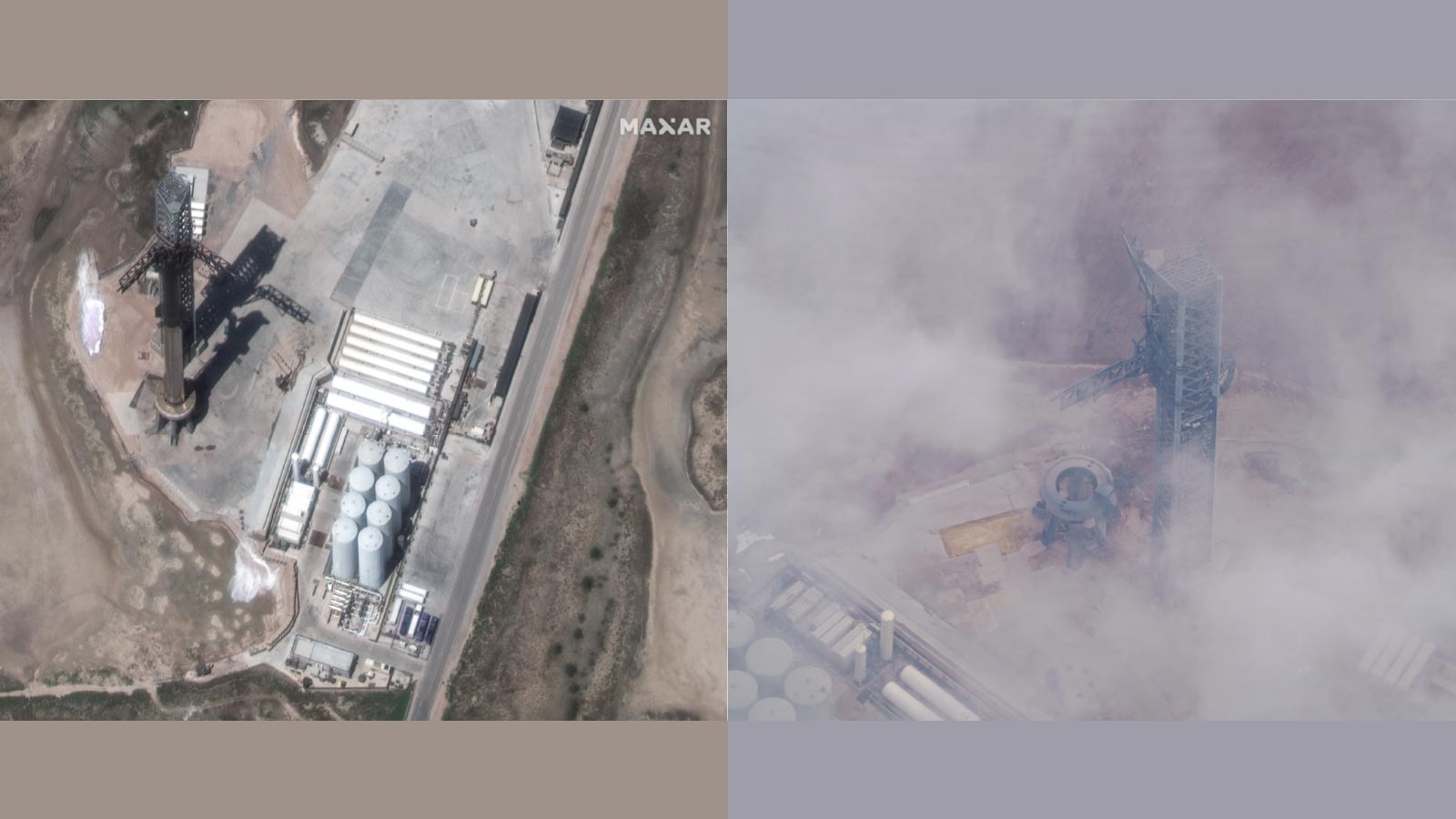Stay Up to Date
Submit your email address to receive the latest industry and Aerospace America news.
BEFORE: A Maxar satellite photographed the Starship rocket prior to its April 20 launch from Boca Chica. Maxar Technologies
AFTER: Chunks of the concrete launch pad were blown away, exposing the ground beneath, as seen in this drone photo. RGV Aerial Photography
FAA investigators are not the only ones looking into the fallout from SpaceX’s decision to launch the Starship spaceship atop a Super Heavy booster without a flame trench or other protective mechanism.
Philip Metzger, a planetary scientist at the University of Central Florida, has been looking into the aftermath of the destruction of the concrete launch pad, caused when the rocket’s 33 first-stage engines ignited to generate 64 meganewtons of thrust. That’s nearly twice the power of the Space Launch System rocket that NASA launched in November.
Studying imagery and videos, he found that some pieces of debris were so large that they caused a six-story-high splash when they fell into the nearby Gulf of Mexico, while sand from the ground was recorded “five or six miles from the launch pad,” he says.
The U.S. Fish and Wildlife Service said in a statement that “impacts from the launch include numerous large concrete chunks, stainless steel sheets, metal and other objects hurled thousands of feet away along with a plume cloud of pulverized concrete that deposited material up to 6.5 miles [10.5 kilometers] northwest of the pad site.”
The staff found debris scattered over an area of 1.5 million square meters, and noted that a 14,000-square-meter fire started at Boca Chica State Park.
Much work will need to be done before the next test flight, which according to Elon Musk could possibly be in the next month or two, once a “water-cooled steel plate” has been installed to protect the pad. But the feasibility of that timing may depend on a lawsuit filed last month by a consortium of environmental groups against FAA for allowing the launch to proceed.
Metzger says the steel plate should help matters. “By having it water cooled, that solves the problem of melting the steel,” he says.
Better still would be a flame trench, which SpaceX decided not to build at Boca Chica. “This could turn out to be a mistake,” Musk wrote on Twitter back in October 2020.
Metzger and other space watchers were taken aback on launch day.
“The extent of the damage took me by surprise,” says Laura Forczyk, a space analyst from Georgia-based Astralytical. “I did not realize SpaceX had taken shortcuts in the design of the pad.”
About Jonathan O'Callaghan
Jonathan is a London-based space and science journalist covering commercial spaceflight, space exploration and astrophysics. A regular contributor to Scientific American and New Scientist, his work has also appeared in Forbes, The New York Times and Wired.
Related Posts
Stay Up to Date
Submit your email address to receive the latest industry and Aerospace America news.




